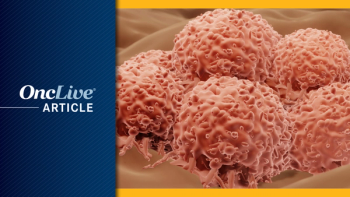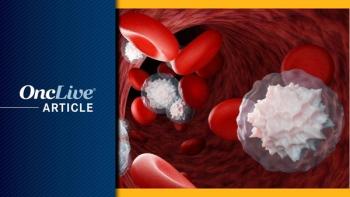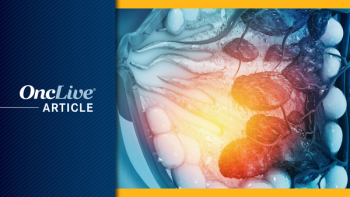
Pirtobrutinib Offers a Potential Strategy to Overcome BTK Inhibitor Resistance in CLL
Catherine Callaghan Coombs, MD, discusses the rationale for the BRUIN study, key efficacy and safety findings, and next steps with pirtobrutinib in chronic lymphocytic leukemia.
The highly potent and selective noncovalent BTK inhibitor pirtobrutinib (LOXO-305) elicited promising signals of efficacy across dose levels in patients with chronic lymphocytic leukemia (CLL) and small lymphocytic lymphoma (SLL), said Catherine Callaghan Coombs, MD, who added that the agent holds the potential to overcome resistance to currently available BTK inhibitors.
“The most common mechanism of resistance for patients with CLL and SLL is the acquisition of mutations at the C481 site,” Coombs said. “In contrast to the commercially available drugs in CLL, such as ibrutinib [Imbruvica] and acalabrutinib [Calquence], which require wild-type [BTK] at the C481 site to bind to the target, pirtobrutinib can [bind to C481] independently of the mutation.”
During the
Moreover, the data indicated that responses with pirtobrutinib deepened over time. Patients who remained on treatment for at least 10 months had an ORR of 86%.
In an interview with OncLive® during the 2021 SOHO Annual Meeting, Coombs, an assistant professor of medicine in the Division of Hematology at the University of North Carolina (UNC) School of Medicine and UNC Lineberger Comprehensive Cancer Center, discussed the rationale for the BRUIN study, key efficacy and safety findings, and next steps with pirtobrutinib in CLL.
OncLive®: Could you speak to the rationale to conduct the phase 1/2 BRUIN trial? What about pirtobrutinib’s mechanism of action made it a logical treatment to pursue in CLL/SLL?
Coombs: We know BTK is an excellent target for treating [patients with] CLL; however, resistance and intolerance remain clinically significant problems. Pirtobrutinib is a unique drug that is a noncovalent inhibitor of BTK. This study is examining this [drug] as a first-in-human compound in the phase 1 setting, and now we have moved to the phase 2 [setting], given the promising efficacy we’ve seen so far.
What methods were employed to evaluate pirtobrutinib and what patients were included in the study population?
This was a phase 1/2 study. The phase 1 portion was conducted in a standard 3+3 design. A few unique aspects of the phase 1 study were that intrapatient dose escalation was permitted, provided that the dose was previously deemed safe, and cohorts were allowed to be expanded at previously deemed safe levels.
The patient population was CLL and SLL, which was the focus of my presentation. However, the study also included patients with other B-cell non-Hodgkin lymphomas [NHLs]. The most common type of B-cell NHL was mantle cell lymphoma, although there was also a sizable population of [patients with] Waldenström [macroglobulinemia], marginal zone lymphoma, and several other unique tumor types.
What did the initial results of the BRUIN study demonstrate in terms of safety?
The key findings regarding the phase 1 portion are that the drug was exceptionally well tolerated. There were very few grade 3 events, and the classic BTK inhibitor adverse effects [AEs] were rarely seen and were often unlikely to be attributable to the drug. One example is that there were only 2 atrial fibrillation events; however, both of those events occurred in patients who had a prior history of atrial fibrillation and were deemed as being unrelated [to pirtobrutinib] by investigators.
The other findings are that other AEs were rare. Only 3 AEs were seen in greater than 10% of patients, specifically fatigue, contusion, and diarrhea.
How did pirtobrutinib perform in terms of efficacy in this patient population?
Regarding efficacy, we saw a 63% ORR in the CLL/SLL patient population. When looking at the subset of patients who had prior BTK exposure, the response rate was quite similar at 62%. Therefore, the ORR did not seem to depend on prior exposure to BTK inhibitors, nor on other factors, such as the reason for discontinuation of prior BTK inhibitor therapy, whether that was progression or intolerance.
We also saw that the response rate increased over time. The median time on therapy was 6 months; however, when we look at patients who were on the drug for greater than 10 months, the response rate was above 80%. It does seem to be a drug that leads to deepened responses over time.
Very few patients have discontinued [pirtobrutinib], and there were only 4 progression events, which is remarkable. Lastly, very few patients—5 of 323 patients for the total cohort—discontinued the drug because of intolerance.
Although it is still early, what is the clinical significance of these results?
The clinical implications of these findings are that we now have a potential new drug that could be used for patients with CLL. [Pirtobrutinib] will, of course, be studied further in the phase 3 setting. That study will, hopefully, allow for continued follow-up and monitoring of this promising early efficacy and ongoing follow-up of toxicity given that these are somewhat early days.
What other trials are ongoing with pirtobrutinib in CLL?
Several [other] phase 3 trials are planned. In the relapsed/refractory setting, 2 studies will be conducted. The first is [evaluating] pirtobrutinib as a monotherapy in comparison with investigator’s choice of best available therapy, which is bendamustine plus rituximab [Rituxan] or idelalisib [Zydelig] plus rituximab. The other study [called BRUIN CLL-322 (NCT04965493)] is looking at pirtobrutinib in combination with venetoclax [Venclexta] and rituximab compared with venetoclax plus rituximab alone. It will be exciting to see how those trials progress over time, how the drug performs, and whether the safety signal continues to be as promising with longer follow-up.
Reference
- Coombs CC, Pagel JM, Shah NN, et al. Pirtobrutinib (LOXO-305), a next generation, highly selective, non-covalent BTK inhibitor in previously treated CLL/SLL: results from the phase 1/2 BRUIN study. Presented at: 2021 SOHO Annual Meeting; September 8-11, 2021; virtual. Abstract CLL-039.

























































































